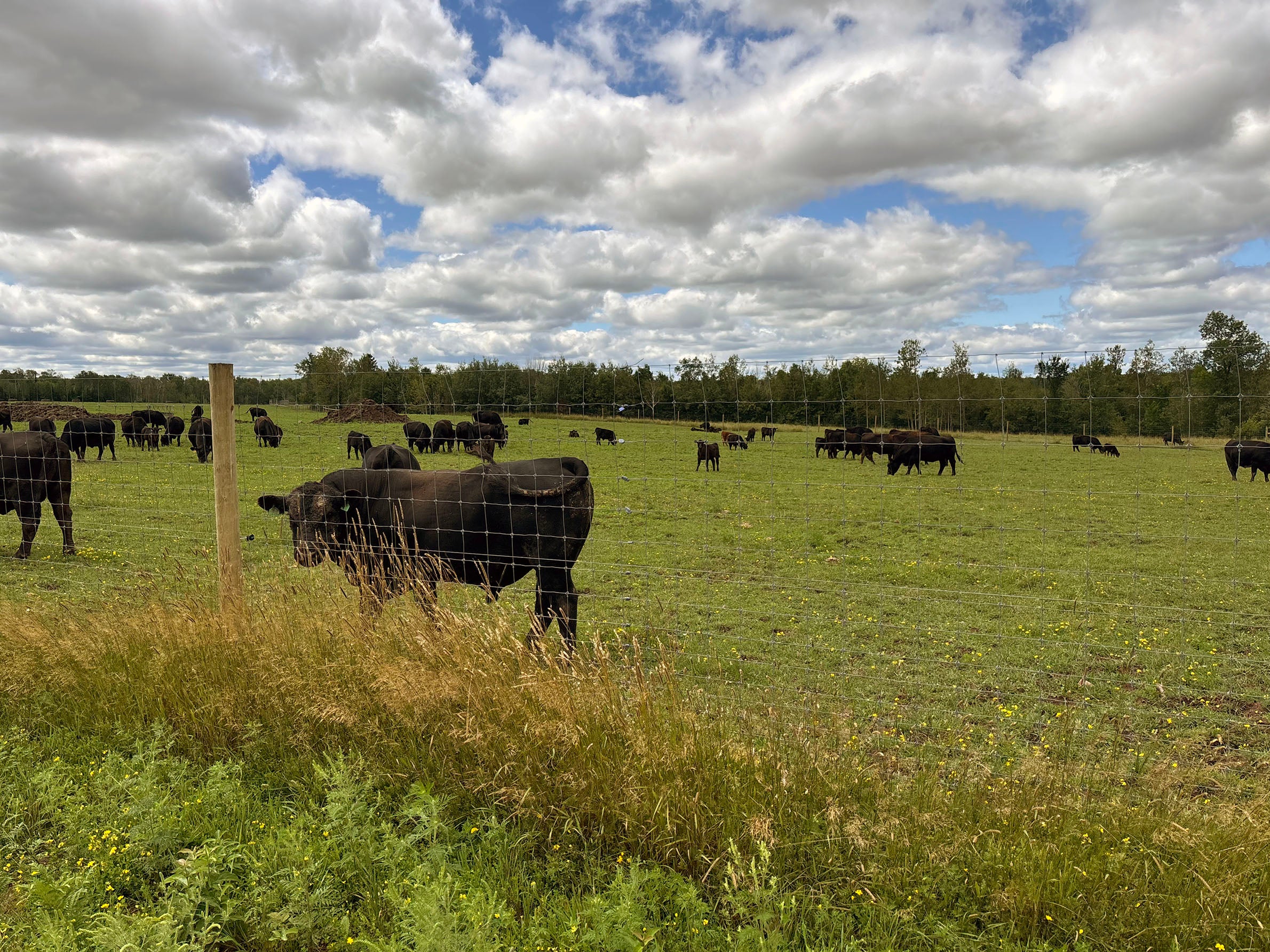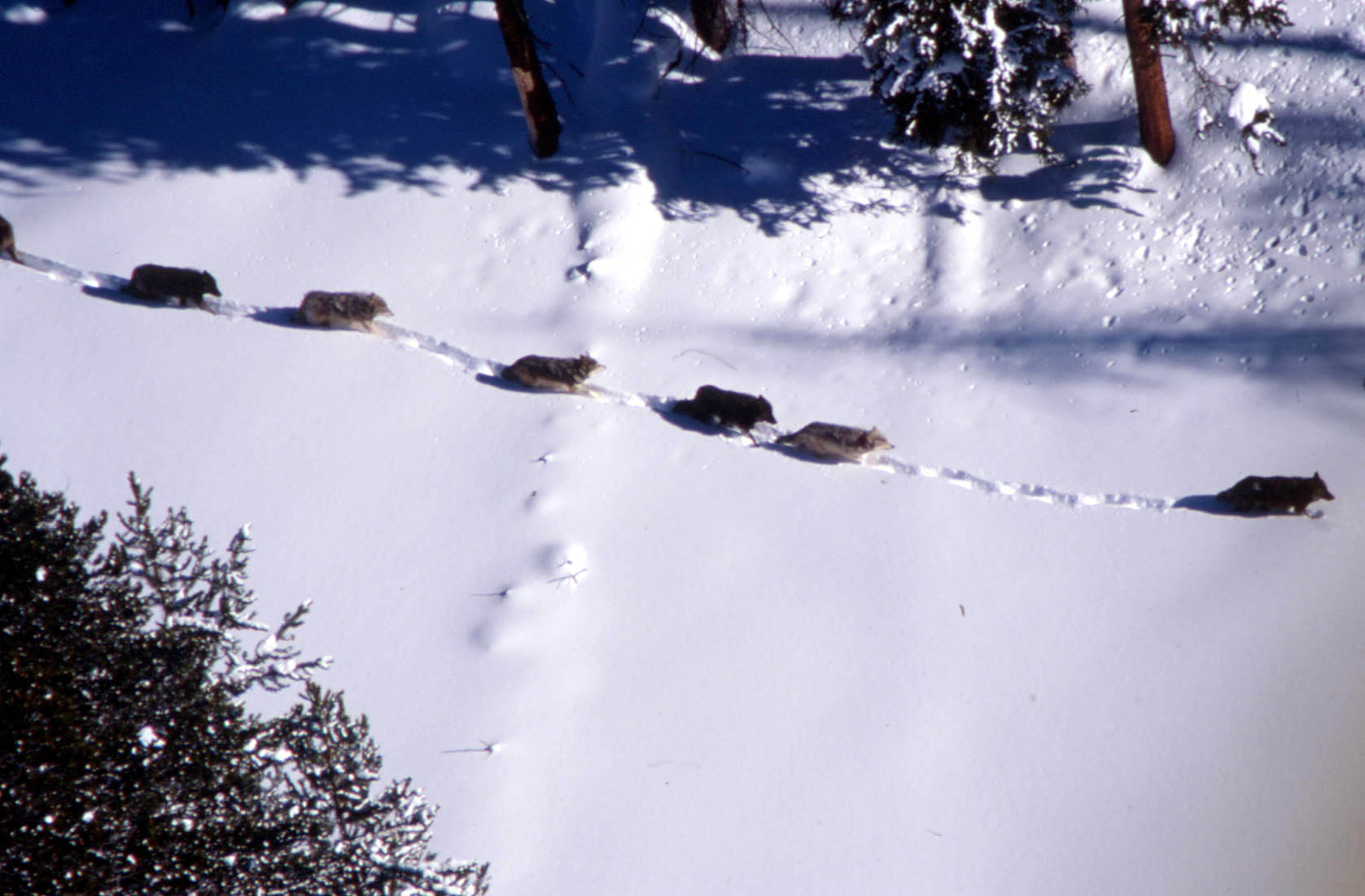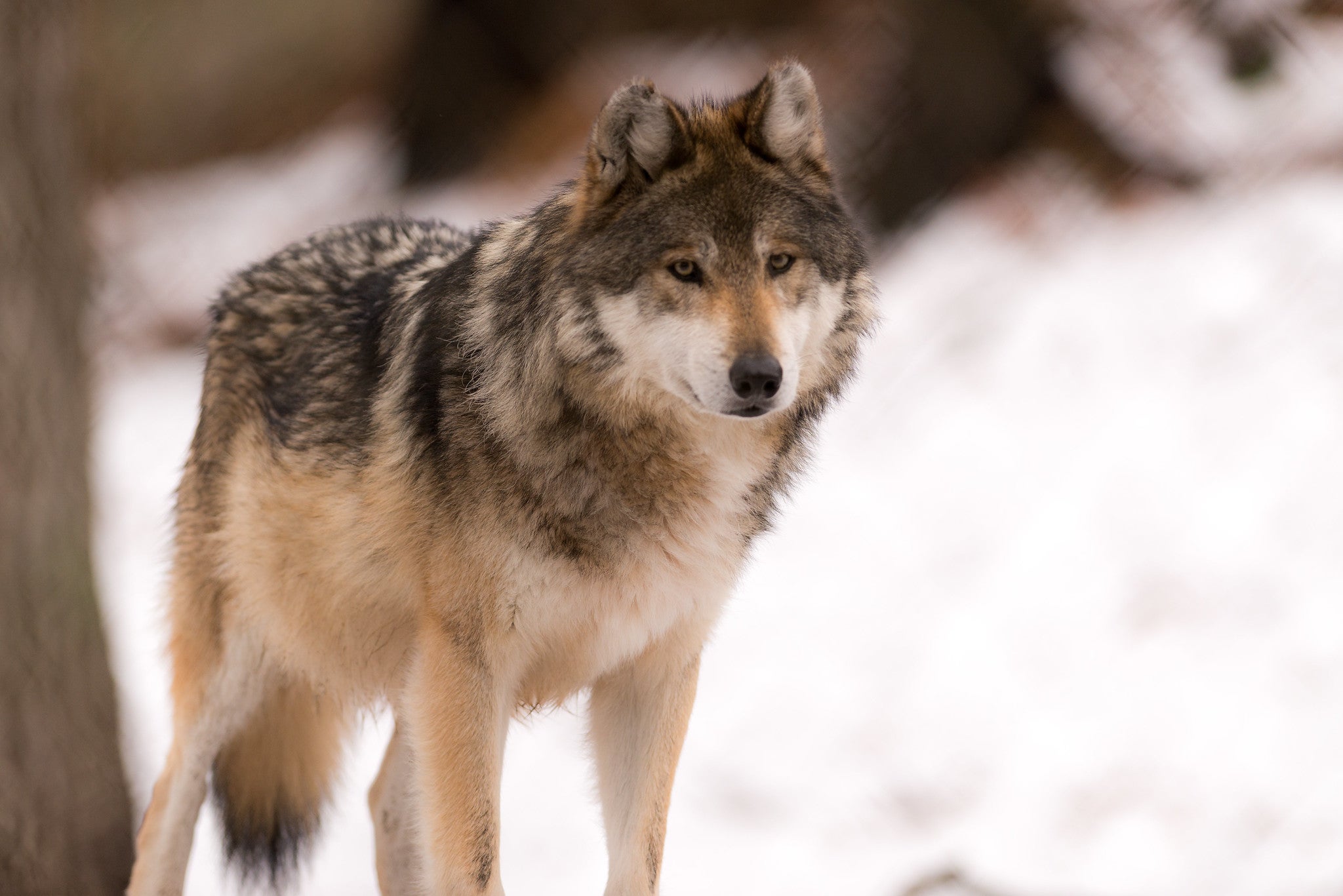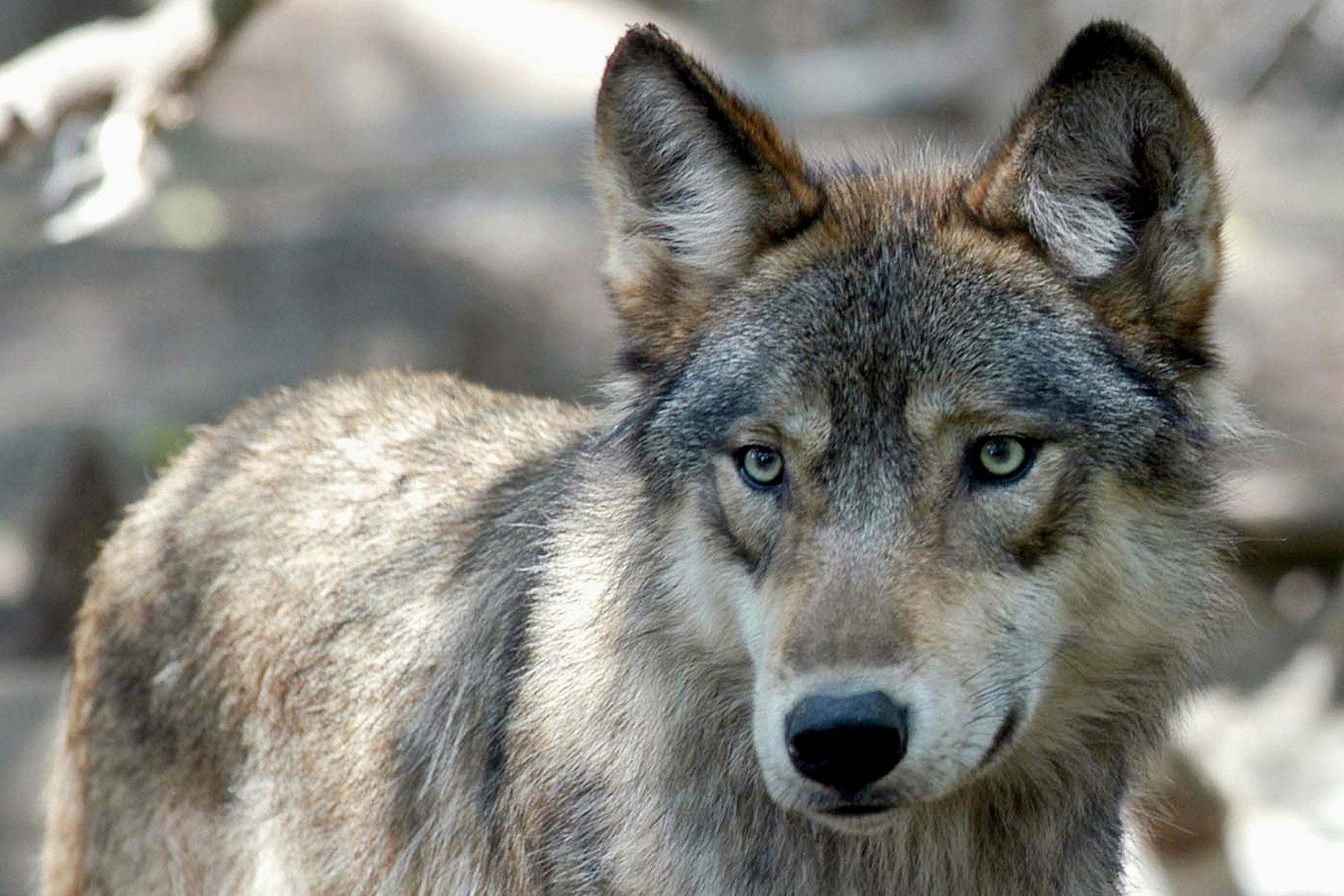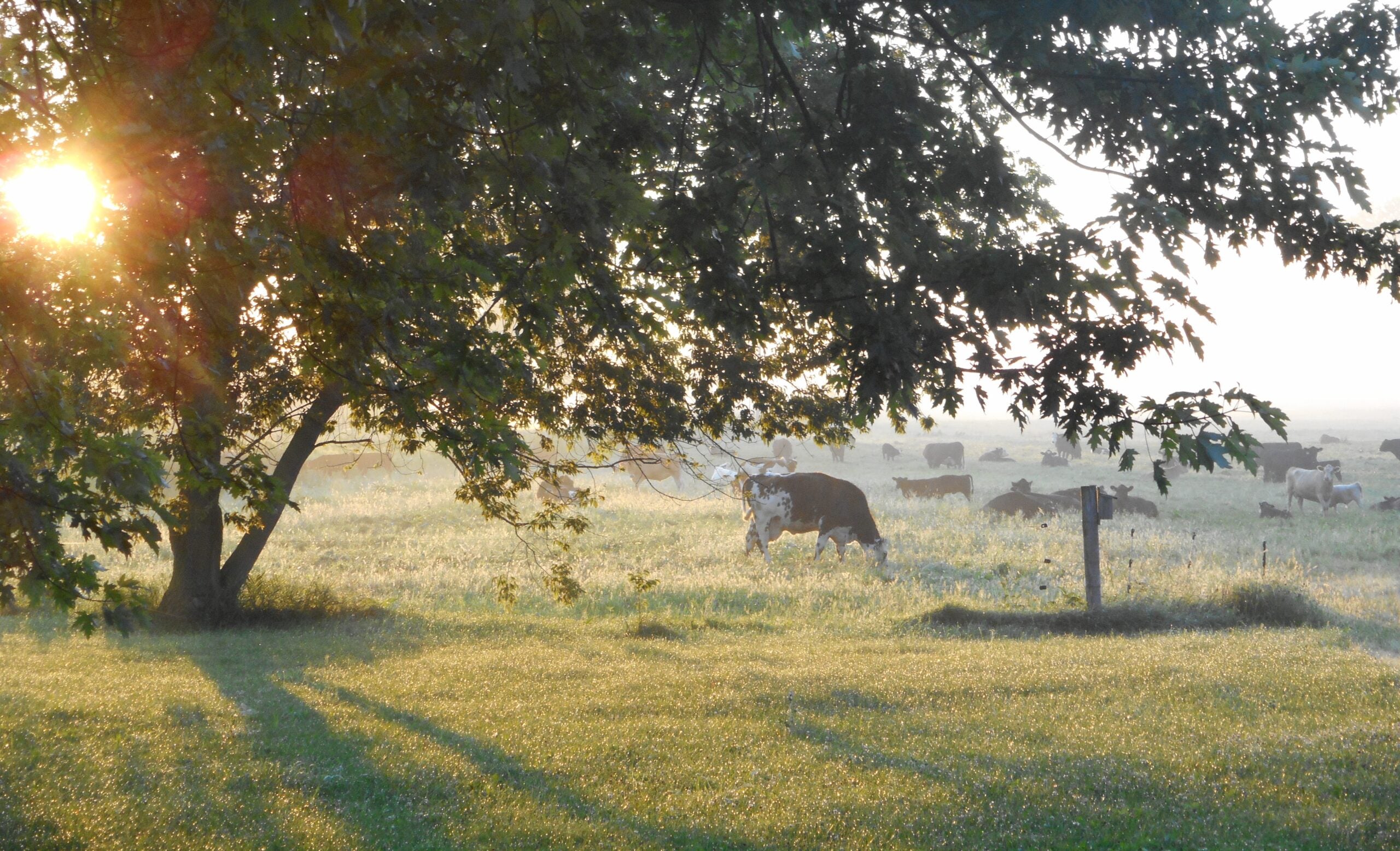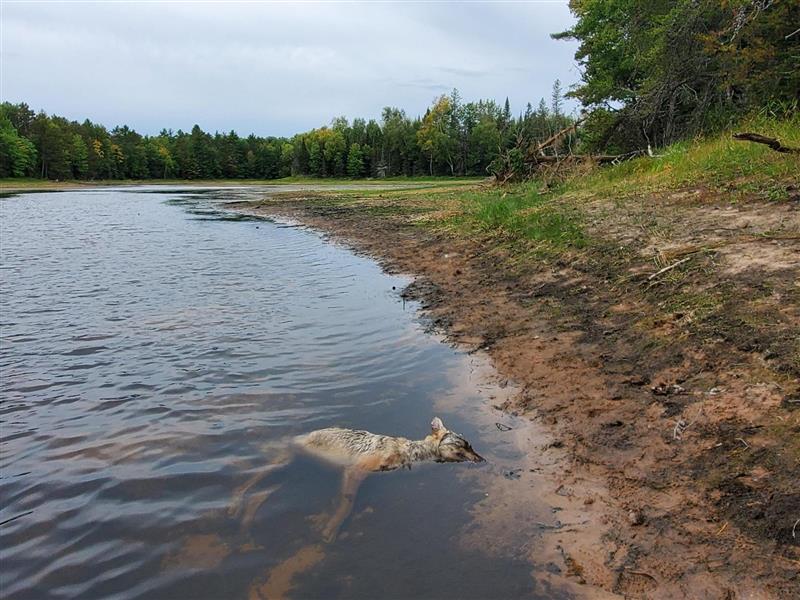For at least the last decade, Dustin Soyring and his family have struggled with wolves on their farm in the northern Wisconsin town of Maple.
Soyring and his father, Jim, own about 1,300 acres in Douglas County and rent another 800 acres for the farm where they care for about 400 beef cows and calves. Soyring said run-ins with wolves were especially tough when cows had their calves in the spring.
“We’d have to try and check on them all the time,” Soyring said. “We were out there usually every two hours. We’d try to take rotational shifts to make sure predators weren’t out there.”
The family tried many nonlethal methods to deter wolves that included fladry or a string of flags, flashing lights on fence posts and radios on wagons. But all those methods only deterred predators for a while.
Now, state and federal wildlife officials are working with northern Wisconsin farms to install predator-proof fences to reduce conflicts between wolves and livestock, including on the Soyring farm.
“This was the first year that we’ve ever gone through an entire calving season (in) which all of them were calved inside that (predator-proof) fence. We didn’t lose a single calf to predators,” Soyring said.
That’s a stark contrast to last year when Soyring said they had half a dozen calves lost to confirmed wolf kills, with another nine missing.
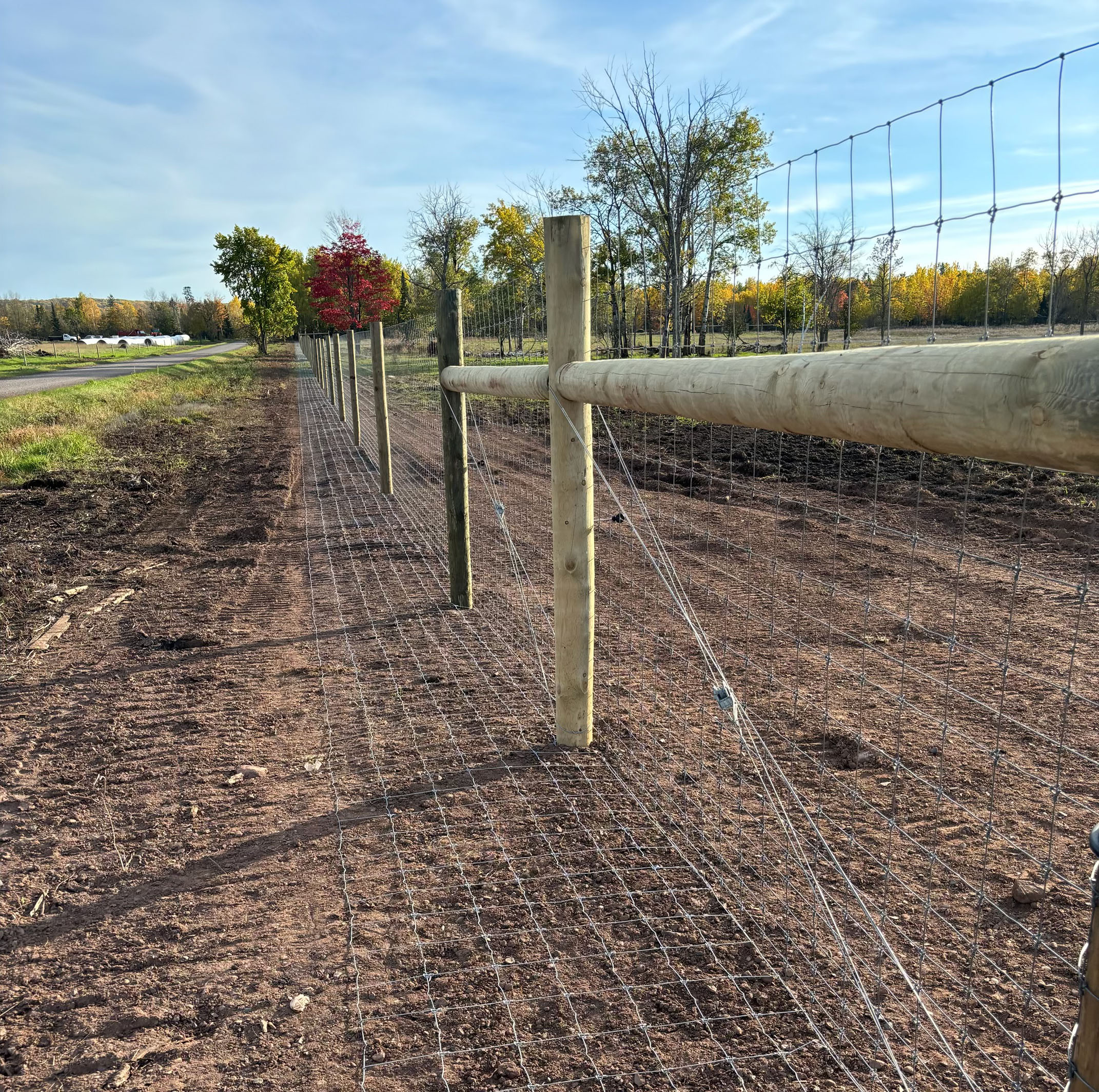
Stay informed on the latest news
Sign up for WPR’s email newsletter.
Fences installed on 6 farms in northern Wisconsin
U.S. Department of Agriculture Wildlife Services worked with the Wisconsin Department of Natural Resources to install the fence on 35 acres of the Soyring farm last fall, and they’ve been adding another fence on 80 acres this month. The net wire fences are 74 inches high and use a 42-inch wire apron that lays flat on the ground at the bottom of the fence.
Dave Ruid, a supervisory wildlife biologist with USDA Wildlife Services, said that prevents wolves from digging underneath.
“Thus far, the projects we’ve done, they’ve been 100 percent effective,” Ruid said.
Ruid said fences have been installed on six farms in northern Wisconsin and they’re working to install fences with two more landowners this year. The first fence was installed on a sheep farm in Price County in 2020 after wolves killed around three dozen sheep in a single night.
Brad Koele, the DNR’s wildlife damage specialist, said the six producers they’ve worked with are pleased with the results.
“It provides them a little relief from the wolf conflicts,” Koele said. “They can have their sheep or their calves inside the fenced area, and it just provides them peace of mind that their livestock is safe.”
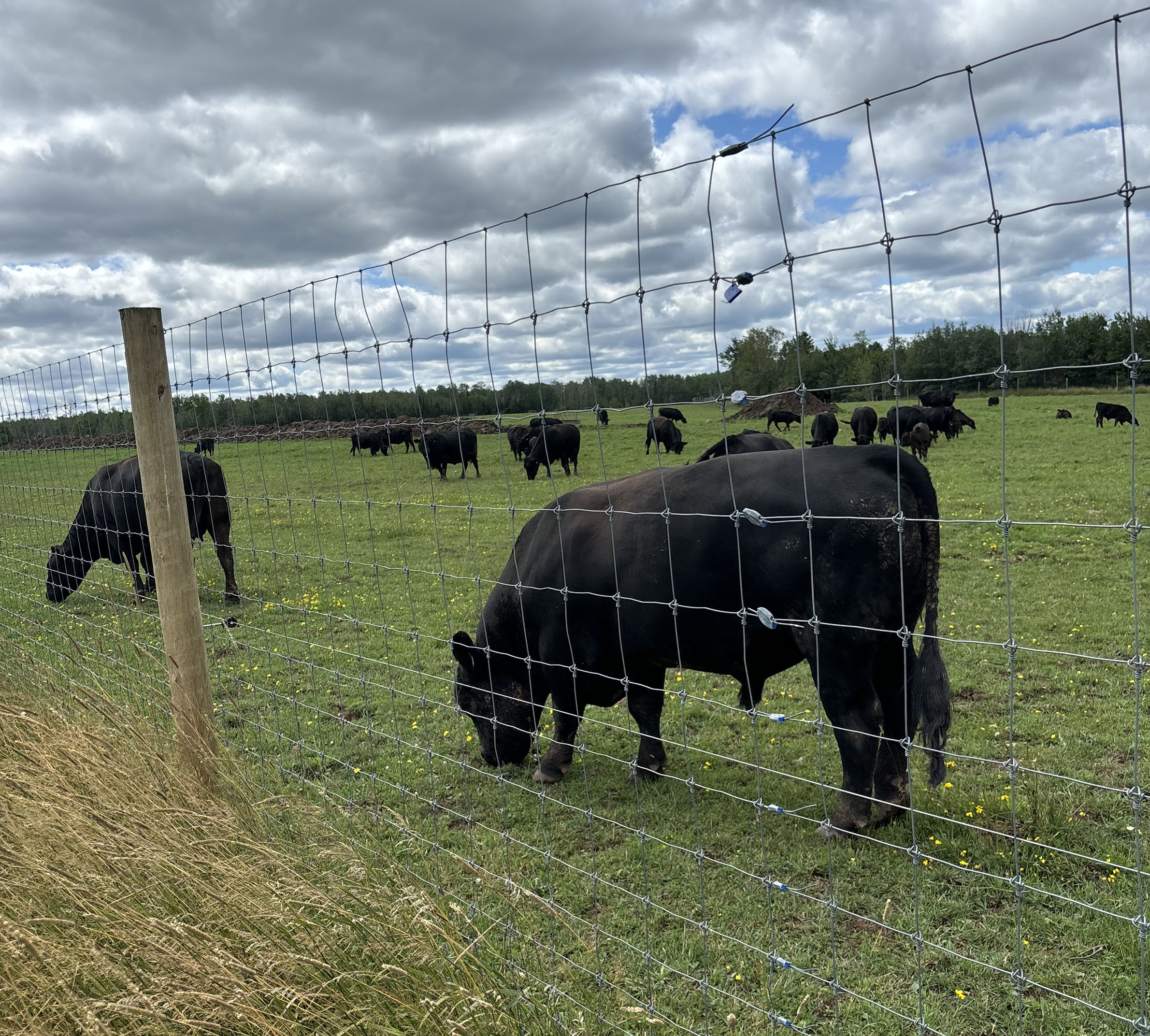
Farms seek to manage conflicts with wolves as population has grown
Beginning in the late 1800s, gray wolves were nearly hunted to extinction in Wisconsin, and only a few remained in the northern reaches of the state by the 1950s. First listed as endangered in 1974, DNR data shows the state’s population has since grown to roughly 1,000 wolves.
The wolf’s status has changed multiple times over the years. Most recently, the animal was delisted in 2021. The delisting led to a wolf hunt that year in Wisconsin, during which hunters killed 218 wolves. In 2022, a federal judge restored protections for the gray wolf in Wisconsin and most states nationwide. Since then, farmers have been unable to use lethal means to deal with problem wolves.
As of Aug. 8, wildlife officials had verified 37 complaints of wolf conflicts with livestock out of 90 complaints reported this year, according to DNR data. At the same time last year, wildlife regulators verified 34 conflicts with livestock out of 57 complaints. The state paid more than $171,000 in wolf depredation payments in 2023. In an average year, Koele said 25 to 30 producers experience wolf depredations.
That’s a small fraction of Wisconsin’s 58,500 farms.
Even so, the effects of wolves have been significant for farmers like Soyring. Livestock animals would be stressed and stampede through fences, damaging neighbor’s yards or running on roads. Soyring added that their calves didn’t grow as well, and he pointed to a University of Montana study that shows animals were often 20 pounds lighter on ranches with wolf depredations.
“It doesn’t sound like a lot for one, but when you go across 200 of them, that’s a lot of money lost,” Soyring said.
The state has paid nearly $3.4 million for wolf depredation payments since 1985.
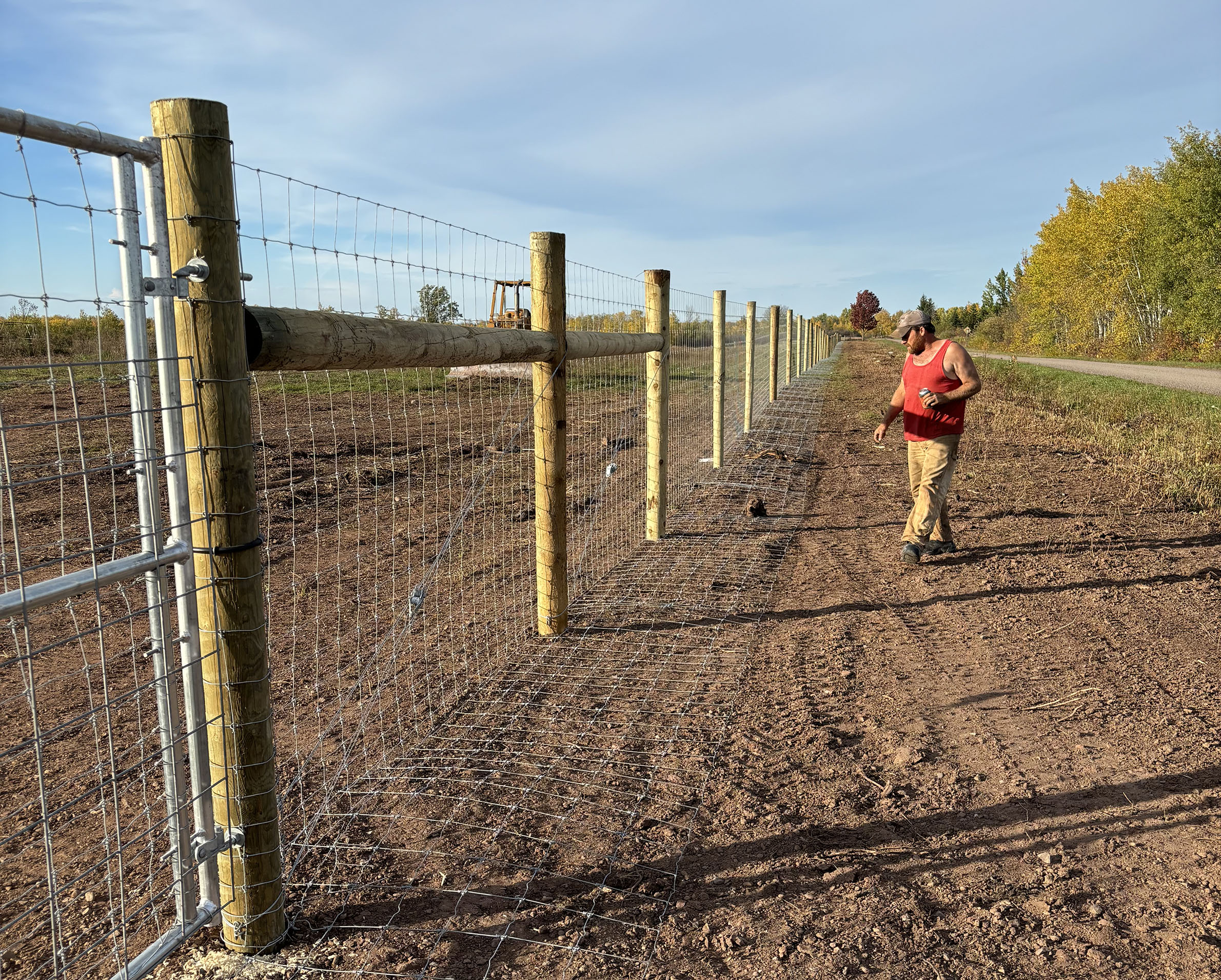
Fences bring both benefits and costs
While the fences are a benefit to farmers, concerns exist about installing them around farms that are too close to other producers, running the risk of shifting wolves to unprotected operations. Soyring added that it’s also not cost-effective to install them around the entire farm. The fencing costs about $9 per linear foot. For 40 acres, Ruid said the cost of such projects can run around $50,000.
“We have limited funding, so we obviously can’t address every chronic farm in one year,” Ruid said.
In Wisconsin, USDA Wildlife Services receives between $200,000 and $300,000 annually for such projects. The DNR has provided anywhere from around $29,000 to nearly $67,000 to assist with their installation on farms.
The financial assistance is a benefit to farmers like Soyring, who plans to continue using the predator-proof fences to keep his livestock safe from wolves.
Wisconsin Public Radio, © Copyright 2025, Board of Regents of the University of Wisconsin System and Wisconsin Educational Communications Board.
